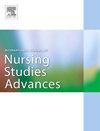Educational technology enhanced interprofessional E-learning for engaging cross-institutional and cross-border healthcare students: A mixed-methods study
IF 3.1
Q1 NURSING
International Journal of Nursing Studies Advances
Pub Date : 2025-08-06
DOI:10.1016/j.ijnsa.2025.100404
引用次数: 0
Abstract
Aim
In the post-COVID-19 era, educators in higher education are exploring innovative pedagogies to deliver effective interprofessional education in an online learning environment. This study aimed to evaluate the effectiveness of the technology-enhanced e-learning modules for undergraduate healthcare students from different cultural backgrounds. The focus was on student engagement with interprofessional learning and diversity using innovative educational technology.
Methods
This is a mixed-methods study including pre- and post-test evaluations and focus group interviews. The educational intervention strategies focused on applying interprofessional learning among undergraduate healthcare students by integrating education technologies (i.e., virtual reality 360 and gamification) into two e-learning modules. Three time-points involving pre and post modules’ evaluation (before and after the 1st learning module, and after the 2nd learning module) were collected using validated scales including Interprofessional Attitudes Scale and Online Student Engagement Scale. Linear mixed models were used to investigate the association between interventions and changes in outcomes from pre-to post-intervention by adjusting the covariates. To further validate the quantitative findings, focus-group interviews were conducted with a verbatim transcript obtained from participating students for content analysis.
Results
A total of 75 undergraduate healthcare students from Hong Kong, Mainland China, South Korea, and Thailand participated in the study. A statistically significant positive change was detected in interprofessional attitude (F = 5.90, p = 0.004), interprofessional diversity and ethics (F = 4.43, p = 0.014) and student engagement (F = 13.42, p < 0.001) after the e-learning modules. A statistically significant correlation was also detected between student engagement and interprofessional attitude. From the qualitative content analysis, three core categories were identified. They were ‘Cultural diversity recognition’, ‘Acquisition of interprofessional attitudes and skills’ and ‘Active learning engagement’.
Conclusions
The technology-enhanced e-learning modules significantly enhanced undergraduate healthcare students’ interprofessional attitude and student learning engagement in terms of interprofessional education. Healthcare educators in higher education are encouraged to integrate educational technology as a pedagogical approach to stimulate interprofessional learning of undergraduate healthcare students.
教育技术增强了跨机构和跨境医疗保健学生参与的跨专业电子学习:一项混合方法研究
在后新冠肺炎时代,高等教育工作者正在探索创新的教学方法,在在线学习环境中提供有效的跨专业教育。本研究旨在评估不同文化背景的医疗保健本科学生使用技术强化电子学习模块的有效性。重点是学生参与跨专业学习和使用创新教育技术的多样性。方法本研究采用混合方法,包括测试前、测试后评价和焦点小组访谈。教育干预策略侧重于通过将教育技术(即虚拟现实360和游戏化)整合到两个电子学习模块中,在本科医疗保健学生中应用跨专业学习。采用经验证的跨专业态度量表和在线学生参与量表收集三个时间点,包括模块前和模块后的评估(第一个学习模块之前和之后,第二个学习模块之后)。通过调整协变量,使用线性混合模型来研究干预与干预前后结果变化之间的关系。为了进一步验证定量结果,焦点小组访谈采用从参与学生那里获得的逐字文字记录进行内容分析。结果共75名来自香港、中国大陆、韩国和泰国的本科卫生专业学生参加了本研究。跨专业态度(F = 5.90, p = 0.004)、跨专业多样性和职业操守(F = 4.43, p = 0.014)、学生敬业度(F = 13.42, p <;0.001)。学生敬业度与跨专业态度之间也存在显著的相关关系。从定性内容分析,确定了三个核心类别。它们分别是“文化多样性认知”、“跨专业态度和技能的习得”和“积极学习参与”。结论技术增强的电子学习模块显著提高了本科卫生保健专业学生的跨专业态度和学生的跨专业学习投入。鼓励高等教育中的医疗保健教育工作者将教育技术作为一种教学方法来促进本科医疗保健学生的跨专业学习。
本文章由计算机程序翻译,如有差异,请以英文原文为准。
求助全文
约1分钟内获得全文
求助全文
来源期刊

International Journal of Nursing Studies Advances
Nursing-General Nursing
CiteScore
5.80
自引率
0.00%
发文量
45
审稿时长
81 days
 求助内容:
求助内容: 应助结果提醒方式:
应助结果提醒方式:


